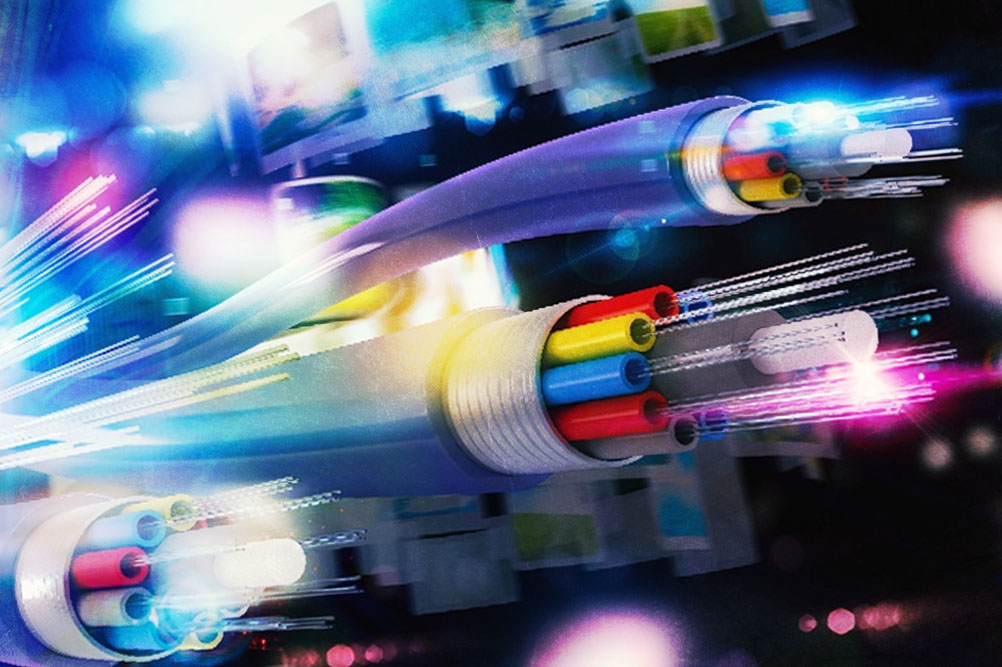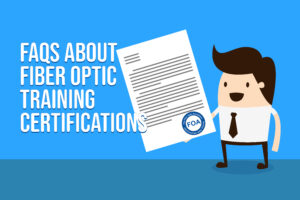If you rely on fiber optic cable internet connection for your home or business, there are times that you potentially struggle on maintaining a connection or even lose your connection altogether. When this happens, there are steps you can take to check your fiber optic cable internet connectivity in an attempt to see what the issue is with your computer.
But before you spend the time to test the fiber internet connection, it’s best for you to begin checking your fiber optic cable internet connectivity by taking a look at your modem and router. Try to reboot them to see if that fixes the problem and repairs the connection. If that doesn’t do the trick, you can now proceed on testing your connection, but before you proceed to the testing, Certified Fiber Optic Technician from Fiber Optic Association Cebu recommends that you should study the equipment needed in testing and get to know about optical loss first and its mechanisms.
Fiber Optic Testing Equipment
To test your fiber optic cable internet connectivity, there are specific tools to help you accurately measure the power loss and pinpoint problems, locate fiber breaks and bend losses, measure cable length and integrity and much more. Here are the following tools you’ll be needing in performing the test in checking your fiber optic cable.
-
Source and Power Meter
 Source and power meter are used to test the light source for the fiber optic line and power in determining if there is fiber optic loss. When you power up these two tools, the power meter should be set to the identical wavelength of the light source and must be placed at the receiving end of the cable and the source meter it should be connected to the transmitting end of the cable.
Source and power meter are used to test the light source for the fiber optic line and power in determining if there is fiber optic loss. When you power up these two tools, the power meter should be set to the identical wavelength of the light source and must be placed at the receiving end of the cable and the source meter it should be connected to the transmitting end of the cable.
-
Optical Test Tool
 This is the tool that performs the actual test for an optical loss. It determines the difference between power entering the cable at the transmitting end and the amount of light that exits at the receiver end of the cable.
This is the tool that performs the actual test for an optical loss. It determines the difference between power entering the cable at the transmitting end and the amount of light that exits at the receiver end of the cable.
-
Visual Fault Locators
 This tool is a visible laser light source which is used to check continuity, locate breaks, poor mechanical splices and damaged connectors in fiber optic cabling. Visual fault locators are an excellent aide to fiber optic technicians in terminating mechanical splices or pre-polished connectors where leaking light is an indicator of a poor fiber cleave or another misalignment.
This tool is a visible laser light source which is used to check continuity, locate breaks, poor mechanical splices and damaged connectors in fiber optic cabling. Visual fault locators are an excellent aide to fiber optic technicians in terminating mechanical splices or pre-polished connectors where leaking light is an indicator of a poor fiber cleave or another misalignment.
-
Fiber Optic Tracer
 Fiber Optic Tracer is a tool that contains an LED source that connects to the optic connector. Using a test cable, you can determine the amount of light that is being transmitted through the fiber. If there is no evidence of light, then you have to return to the connector to find the problem.
Fiber Optic Tracer is a tool that contains an LED source that connects to the optic connector. Using a test cable, you can determine the amount of light that is being transmitted through the fiber. If there is no evidence of light, then you have to return to the connector to find the problem.
-
Test Cable
 This tool is also known as a reference test cable. It is the tool you used to determine whether the problem is with the cable itself or the connectors in the configuration.
This tool is also known as a reference test cable. It is the tool you used to determine whether the problem is with the cable itself or the connectors in the configuration.
Optical Fiber Loss
Fiber optical cable provides connection to the internet through the transmission of light pulses via optical fibers and the amount of light that reaches the connection determines the effectiveness of internet connectivity. When the amount of light pulses that are being transmitted in transmission is insufficient, this is known as an optical loss. And here are the following optical fiber loss mechanisms:
Absorption
Absorption is uniform. It absorbs the same amount the same fraction of light at the same wavelength. And the absorption of light energy is due to heating of ion impurities results in a dimming of light at the end of the fiber. Here are the two types of absorption:
- Intrinsic Absorption: This absorption is caused by the interaction of the propagating light wave with one or more components of the fiber glass.
- Extrinsic Absorption: This is the results from the presence of transition metal ions like iron, chromium, cobalt, copper, and the OH ion from water dissolved in glass.
Scattering
This type of loss occurs when a wave interacts with a particle in a way that removes energy in the directional propagating wave and transfers it to other directions. The light is sent in another direction. There are two main types of scattering: Linear scattering and Non-Linear scattering.
- Linear Scattering: This scattering is caused by small-scale inhomogeneities that are produced in the fiber fabrication process.
- Non-Linear Scattering: Is a response of glass fibers to the optical intensity of light which is caused by vibrations of the crystal lattice.
Bending
A loss that exists when an optical fiber undergoes bending is called bending losses and there are two types of bending.
- Macroscopic Bending: Bending which complete fiber that undergoes bends which causes certain modes not to be reflected therefore causes loss to the cladding.
- Microscopic Bending: Bending that causes light to be reflected at angles when there is no further reflection.
Testing Fiber for Optical Loss
 In order to know how effective your fiber optic cables are transmitting, you are required to test each one for optical loss. As what have mentioned above, the term “optical loss” describes the difference between the amount of light sent into the transmitting end of a fiber optic cable, and the amount of light that successfully made it to the cable’s receiving end. In testing fiber optical loss, you will need to connect to a test source to provide an optical light standard, as well as launch cable to provide a calibrated. Here’s the basic tutorial covering the basic steps involved in Optical Loss Testing.
In order to know how effective your fiber optic cables are transmitting, you are required to test each one for optical loss. As what have mentioned above, the term “optical loss” describes the difference between the amount of light sent into the transmitting end of a fiber optic cable, and the amount of light that successfully made it to the cable’s receiving end. In testing fiber optical loss, you will need to connect to a test source to provide an optical light standard, as well as launch cable to provide a calibrated. Here’s the basic tutorial covering the basic steps involved in Optical Loss Testing.
Step 1: Connect your test cable to the reference cable.
Step 2: Connect the test source to the transmitting end of the test cable then,
Step 3: Connect the power meter you have to the receiving end of the reference cable.
Step 4: Using the test source, send the light a signal to the test cable.
Step 5: Then at the receiving end of the reference cable, check and take a reading of the signal light with the power meter.
General Testing
If you want to perform the testing yourself remember to conduct some general troubleshooting regardless of how insignificant it may seem. And now let’s proceed on how to check your fiber optic cable internet connectivity by following these steps.
Step 1: Check the outside line for any breaks on the exterior of the building because it can easily get damaged by outdoor elements causing the fiber optic connection to malfunction. Ensure that there is no damage at every point and inspect every point carefully where the cable enters the building.
Step 2: Check the inside configuration to ensure that there is no stress on the fiber optic cables inside the building. Moreover, you should check to ensure that all of the connections are secured to the devices that run in the network because there are times that the connection becomes loose without your knowledge which causes problems with the internet connectivity.
Step 3: Perform an inspection of the interior cable to ensure that there are no abnormal bends in the cable that may obstruct the fiber optic light from transmitting to the receiving end of the cable. Keep the cable free of bends, fiber optics are protected that way from getting broken inside the cable.
If you have performed the test and inspection completely but still experiencing problems, you may want to contact your Internet service provider to find out if there are any problems on their end. There are times that Internet service providers are experiencing connection problems due to high traffic volumes, malfunction of equipment, or maybe the external wires and connection are damaged by inclement weather or its been damaged ever since, which inadvertently affects your internet as well.
But if you can’t reach your internet service provider you may reach out from us, Fiber Optic Association Cebu. We have a lot of experts on our association, in fact, we are composed of Accredited fiber optic technicians who are well-knowledge about on how to check fiber optical cable internet connectivity. We also offer to make repairs to your home or business’ fiber optical cables and get you connected to the internet once again. Additionally, if you want to learn about the fiber optics and become pro we highly recommend to our customers to undergo our fiber optic technician training so that when the time comes that you’ll be facing the same problem again you are able to fix it yourself.



